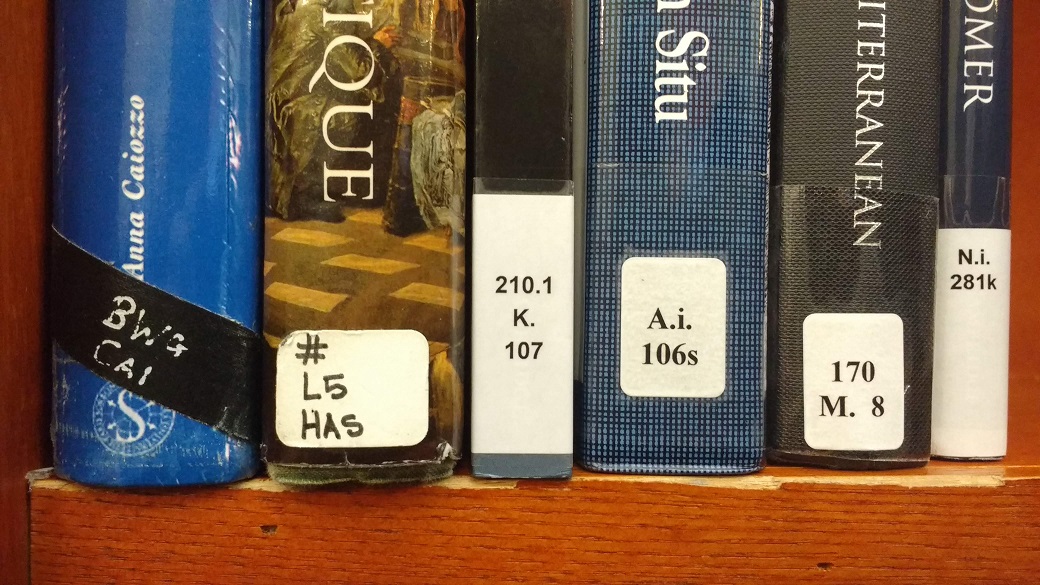
I started working at the Sackler Library in April 2019. However, I have been an intensive and daily reader at the Sackler since 2016. Having used the Sackler as my main work space for more than two years, I had become keen to also contribute to its maintenance and functioning.
I am writing my D.Phil. thesis in the field of Assyriology at the University of Oxford. The Sackler is the main research library for any researcher in the field of Ancient Near Eastern Studies at Oxford (at Wolfson College, the Library houses the Jeremy Black Collection in Near Eastern Studies, as well).

The Sackler offers many amenities and services to the Assyriological researcher: it is a quiet and peaceful work space, and all the books and periodicals relevant for our field are conveniently accessible on the first floor. Once you start working at one of the desks there, all the necessary materials you can dream of – as an Assyriologist – are just a few steps, or clicks, away. The Ancient Near Eastern collection of books is comprehensive, and new accessions can be found in the new books and new journal display on the ground and first floors. Interdisciplinary research is easily possible in the Sackler – sections covering our neighbouring disciplines — Egyptology, Classics and Archaeology — are also housed at the Sackler Library, and occasionally, you will need to make an “expedition” to the ground floor to find a volume in the Classics section, or a periodical in the Haverfield Room. Thus, one can quickly look up parallels and differences in a differing geographical region or period – and lose oneself in an interesting topic in a neighbouring field.
The Sackler is also very international in its readers. Many visiting and permanent researchers from all around the world use the Sackler for their research, and you can easily make contact with a researcher from a neighbouring field on a staircase or in the lobby area. I should mention that the Sackler is conveniently located adjacent the Ashmolean Museum, so that an inspiring break there is easily manageable.
When you have finished your research for the day, but would like to continue your work with the same books the next day, you can leave a stack of up to ten books at the reservation point (these can be found on every floor of the Library), using an overnight reservation slip. This prevents the books from being re-shelved the following morning and enables you to continue working exactly where you left off the night before.

Did I mention the library’s opening times? The Sackler is open seven days a week: 9 am – 10 pm on weekdays, 11 am – 6 pm on Saturdays, and 12 – 6 pm on Sundays. This means I have access to the research materials I need — Assyriological books and periodicals (and new acquisitions) — on a daily basis (unless it is a major holiday). Depending on your patron status – i.e. if you are a member of the University of Oxford – you can even borrow books which are not confined to the library to work with them after closing time. If you have to meet impending deadlines, then the long and daily opening times and the option to borrow books can help a great deal.
Once you have finished using a book, you can put it on the respective trolley on each floor. When I first became a reader at the Sackler I did not realise that there is a sign on each trolley which asks you to put books within a specific shelf mark range on it. Assyriological books, for example, are mainly classified to what is known as ‘the 200s’ and there is trolley designated for these 200s books permanently located on the first floor. Since I had not paid attention to the signs on the trolleys, I put my books on different trolleys at first, for example on the trolley for Egyptological books, which are classified to what is known as ‘the 300s’. Now, that I have started working as a library assistant at the Sackler, and shelve books myself, I realise how much easier it is for the library assistants if readers return their research materials to the correct trolleys: the shelving gets done faster. As a reader I find it a great luxury that library assistants shelve the books for me, and it ensures that the books are shelved in their proper place.
I have learned new things about the Sackler since I started working as a member of Reader Services staff. Shelving is obviously a big part of my work, and I enjoy it, especially on the floors where I have not been a reader before, such as the second and third floors, which house the Western and Eastern art and architecture collections. I am usually fascinated by the titles and artworks shown in these books as they show subject areas which, as a researcher using materials on the first floor, I had not encountered before.
I am very grateful for the introduction to my new job and for the support of my Sackler colleagues. I have always felt at home as a reader and now also as a library assistant. I can only recommend to researchers that they make full use of the resources available to them in this amazing library.
Lynn-Salammbo Zimmerman
Library Assistant, Reader Services, Sackler Library
and D.Phil. candidate in Assyriology




